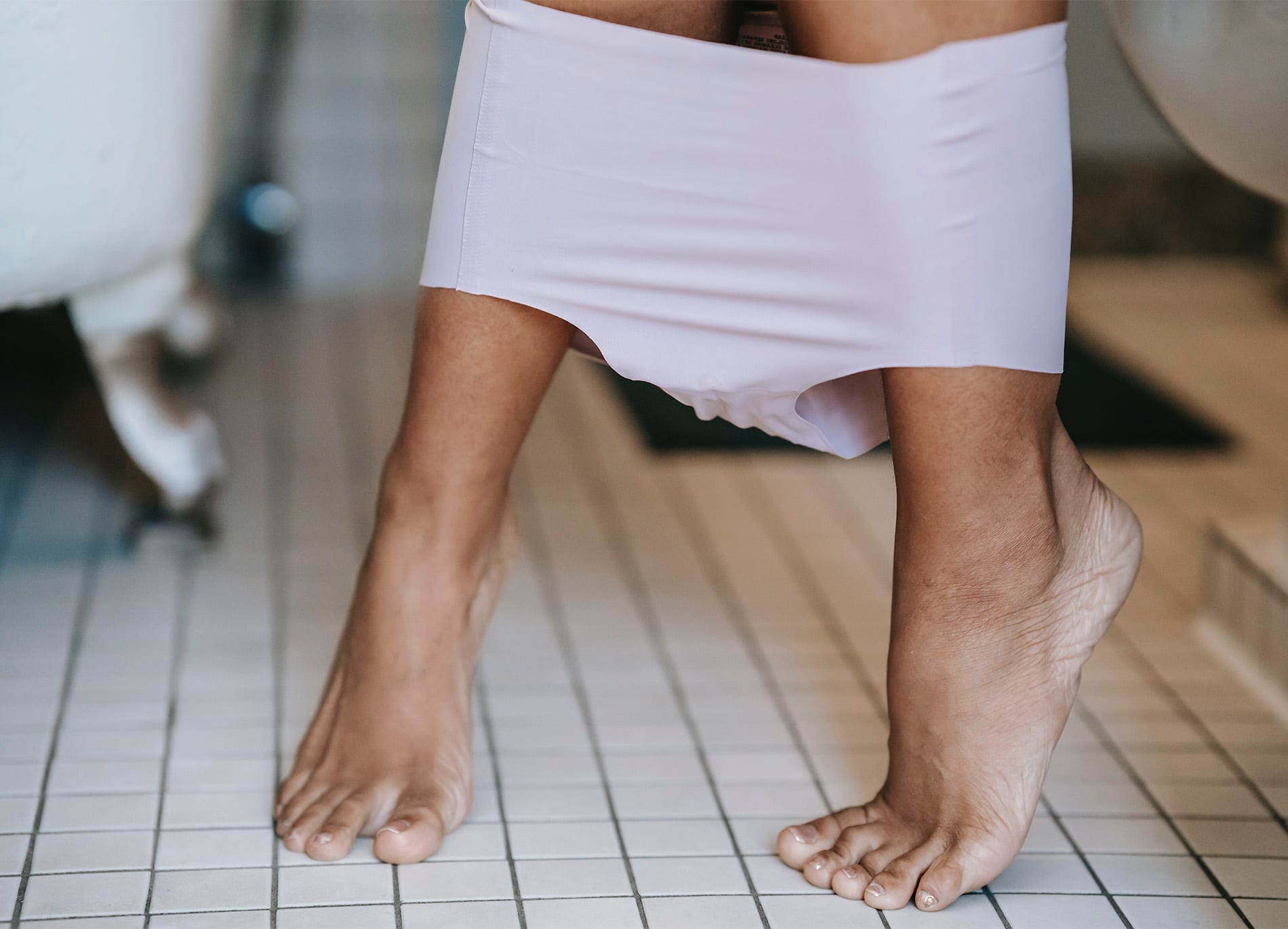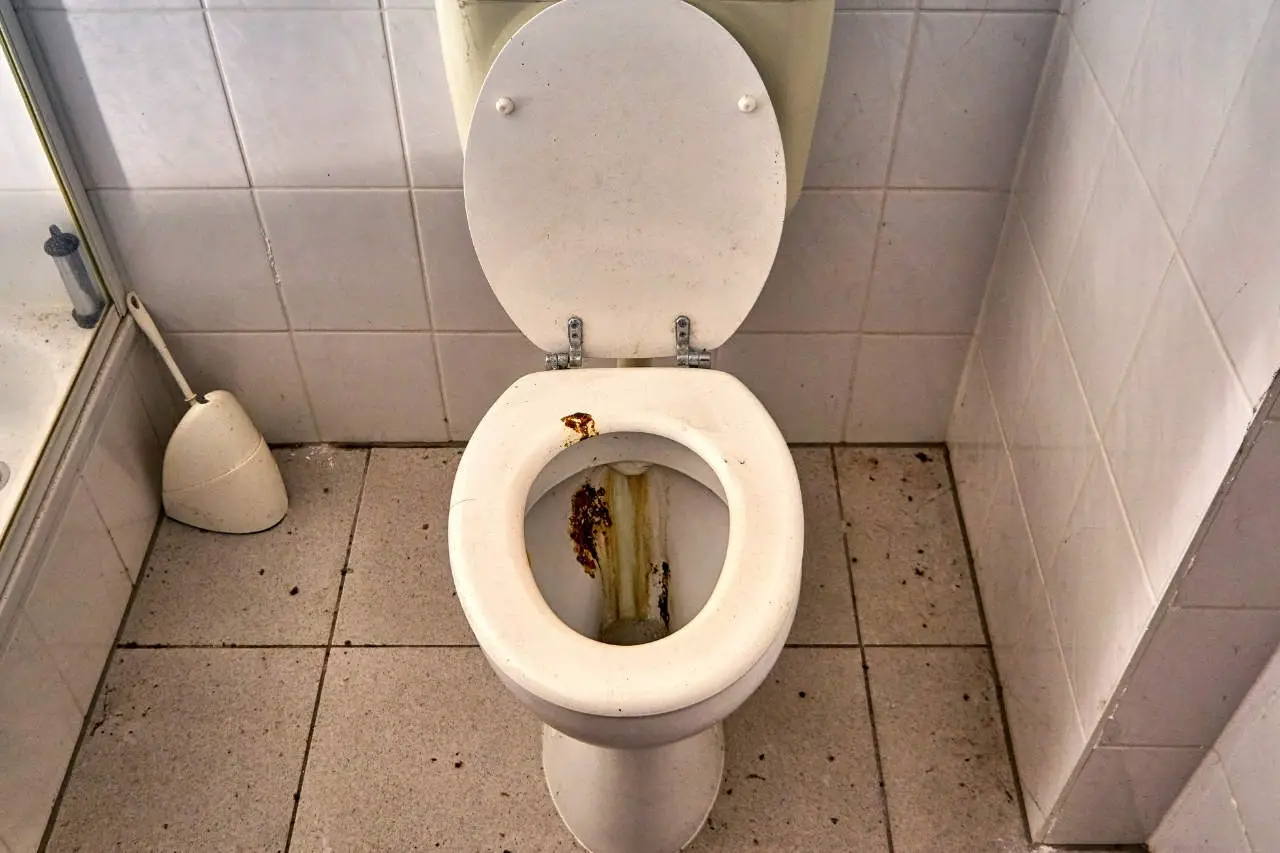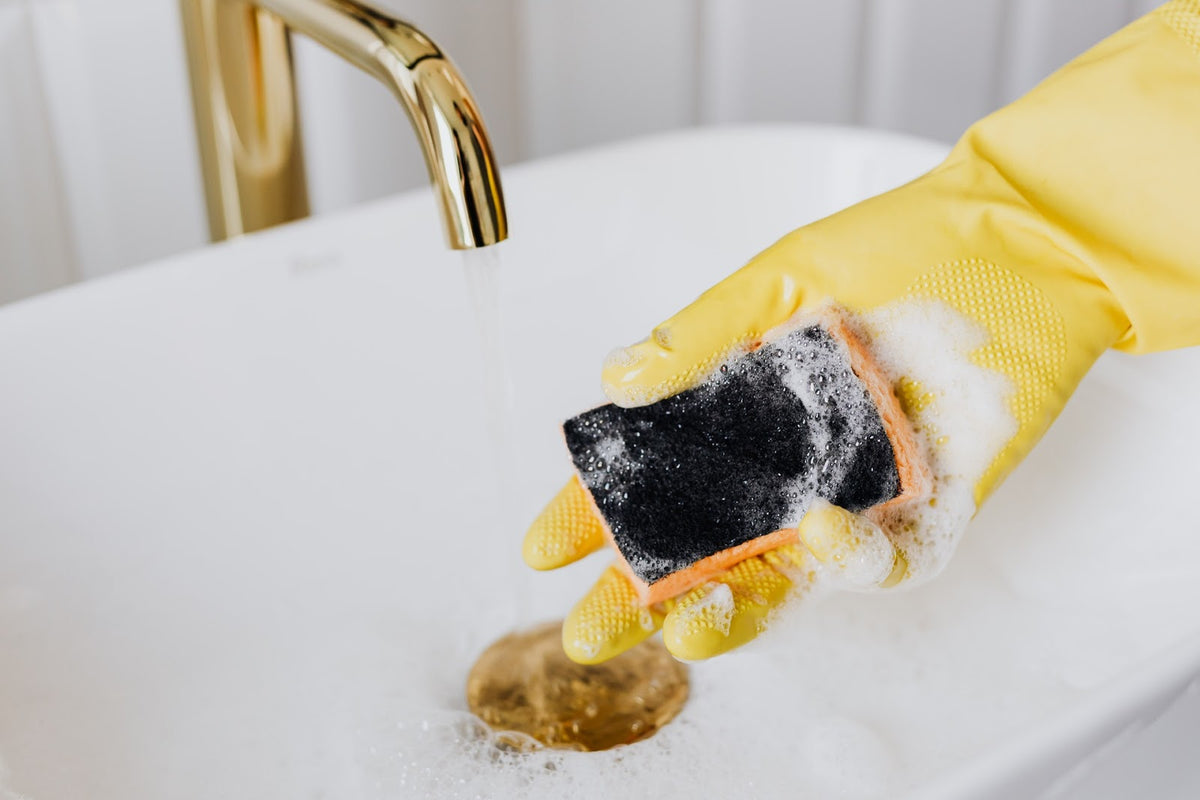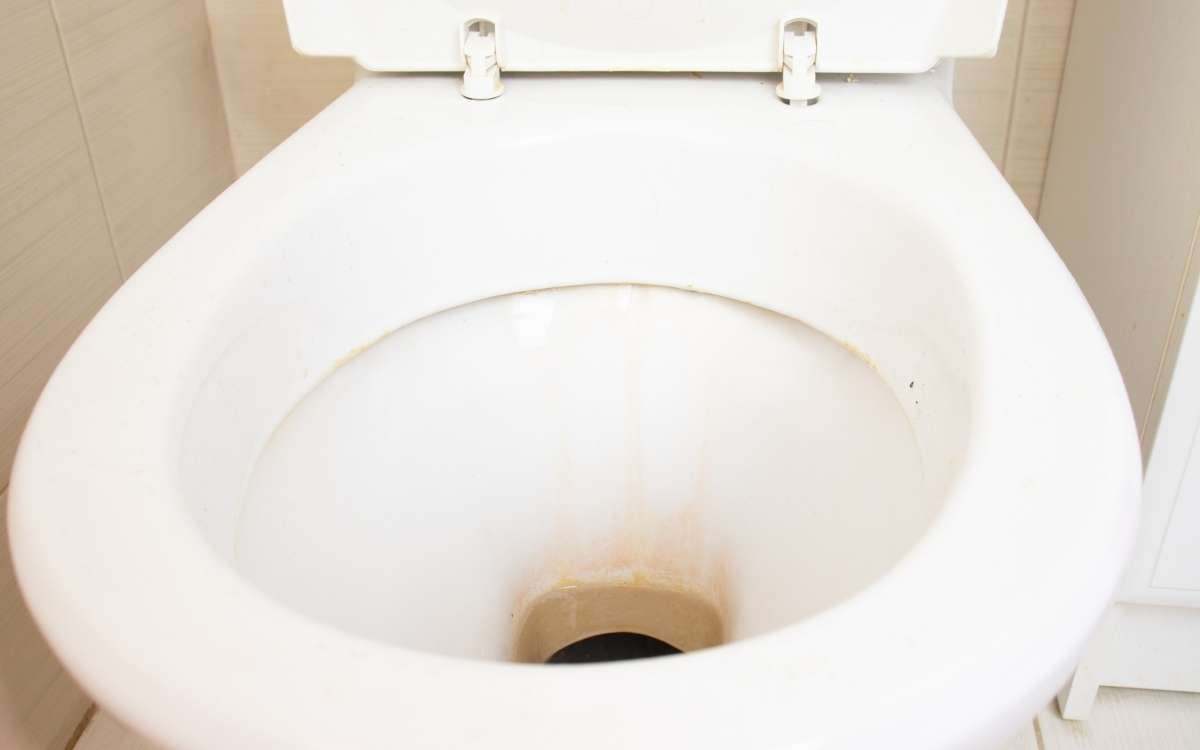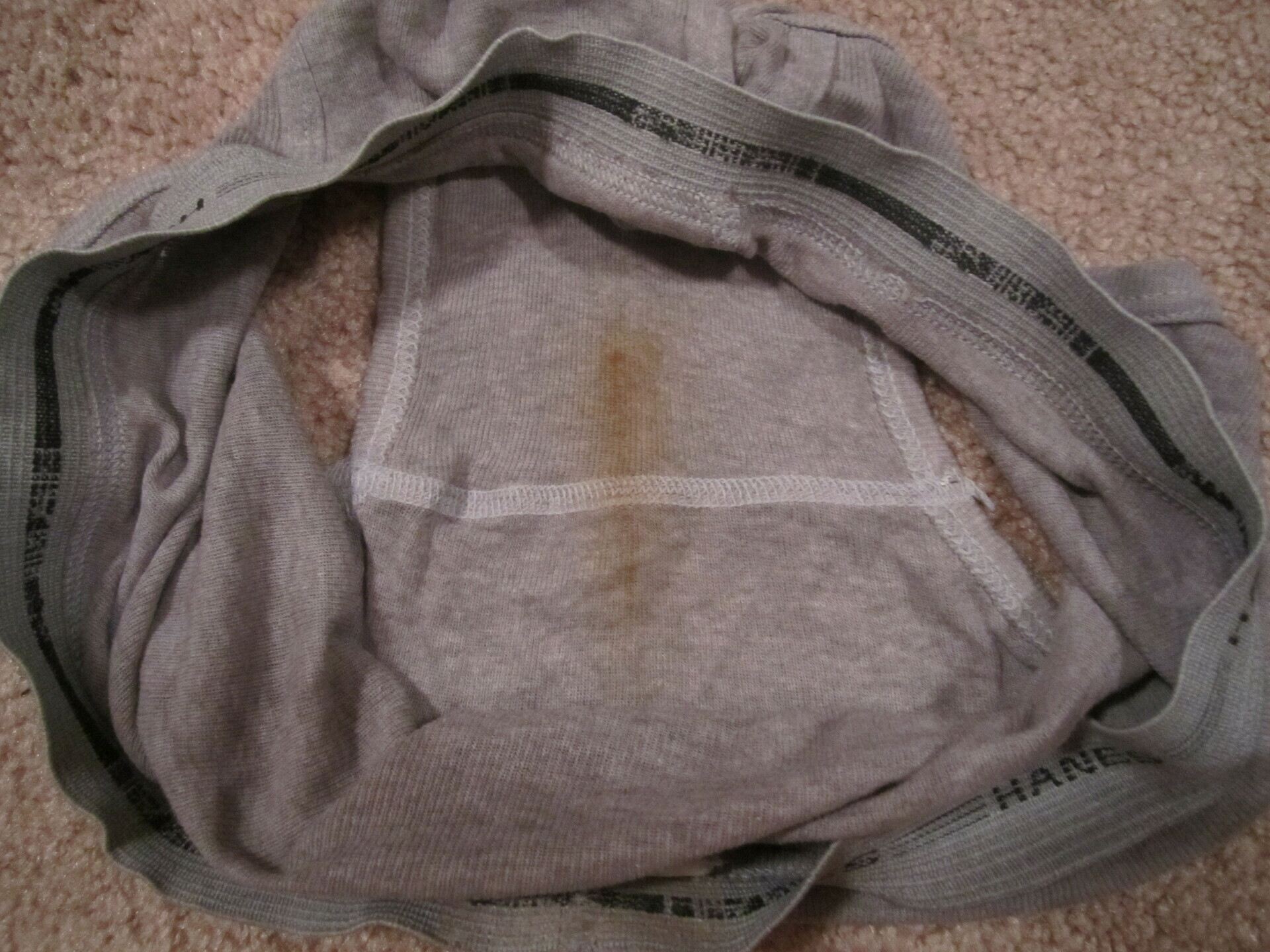

FAQs
Why Do My Underwear Get Stained
Modified: August 28, 2023
Learn the reasons behind stained underwear in this comprehensive guide. Find answers to all your general questions about this common issue.
(Many of the links in this article redirect to a specific reviewed product. Your purchase of these products through affiliate links helps to generate commission for Under-tec.com, at no extra cost. Learn more)
Table of Contents
- Introduction
- Understanding Underwear Staining
- Common Causes of Underwear Staining
- Sweat Stains
- Deodorant Stains
- Menstrual Blood Stains
- Urine Stains
- Vaginal Discharge Stains
- Fecal Stains
- Other Stains and Discolorations
- Preventing and Managing Underwear Staining
- Proper Hygiene Practices
- Choosing the Right Underwear
- Pre-Treating Stains
- Laundering Techniques
- Seeking Medical Advice
- Conclusion
Introduction
Underwear staining is a common issue that many people encounter. It can be incredibly frustrating to discover unsightly stains on your favorite undergarments, but understanding the causes and taking preventative measures can help you avoid this problem in the future. In this article, we will explore the various reasons behind underwear staining and provide tips on how to prevent and manage it.
Stains on underwear can range from sweat marks and deodorant residue to menstrual blood, urine, and even fecal stains. While some of these stains may seem inevitable, there are steps you can take to minimize their occurrence and ensure that your underwear stays clean and pristine.
By understanding the causes of underwear staining and implementing proper hygiene practices, you can maintain the longevity and appearance of your underwear. Choosing the right underwear fabric, pre-treating stains, following recommended laundering techniques, and seeking medical advice when necessary are all essential components in managing underwear staining.
Whether you’re tired of seeing sweat stains on your gym shorts or dealing with embarrassing marks on your underwear, this article will provide you with the information you need to address and prevent these issues. So, let’s dive in and explore the wonderful world of underwear staining and how to keep your undergarments looking their best.
Understanding Underwear Staining
Before we delve into the common causes of underwear staining and how to prevent it, it’s important to understand why staining occurs in the first place. Underwear staining can result from a combination of factors, including bodily fluids, chemicals, and even the type of fabric used in your underwear.
One of the primary factors contributing to underwear staining is sweat. When we engage in physical activities or experience high temperatures, our bodies produce sweat to cool down. Unfortunately, sweat stains can leave noticeable marks on light-colored underwear.
In addition to sweat, deodorant can also take a toll on the appearance of your underwear. Many deodorants contain aluminum compounds that can react with sweat, resulting in yellowish stains. These stains can be difficult to remove, especially if they have set in over time.
Menstrual blood can also cause staining on underwear. The iron content in blood can leave behind stubborn stains that may require special attention during the laundering process. Similarly, urine stains can occur due to bladder leaks or accidents, and these stains can become more challenging to remove if not treated promptly.
Women may experience another type of staining known as vaginal discharge. This is a natural secretion that helps keep the vagina clean and healthy. However, the discharge can leave behind stains on underwear, particularly if it is thick or has a yellowish tint.
Furthermore, fecal stains, though less common, can occur due to digestive issues or poor hygiene practices. These stains can be particularly embarrassing and require extra care when cleaning.
It’s worth noting that other stains and discolorations can also affect underwear. For example, certain medications or topical creams can cause discoloration, while bleach or harsh detergents may lead to color fading or damage to the fabric.
Understanding the reasons behind underwear staining is crucial for effectively managing and preventing it. In the following sections, we will explore specific causes of staining and provide practical tips on how to mitigate their impact on your underwear.
Common Causes of Underwear Staining
Underwear staining can occur due to several factors, ranging from bodily fluids to environmental influences. By understanding the common causes of staining, you can take proactive measures to prevent and address this issue. Let’s explore some of the most prevalent causes of underwear staining:
- Sweat Stains: Sweat is a natural bodily function that helps regulate body temperature. However, the combination of sweat and bacteria can lead to yellowish stains on underwear, particularly in areas with heavy perspiration like the underarms and groin. These stains can be difficult to remove without proper treatment.
- Deodorant Stains: Many deodorants and antiperspirants contain aluminum compounds that can react with sweat, resulting in yellow stains on clothing. When combined with sweat, these stains can become more pronounced on underwear. To avoid deodorant stains, consider using aluminum-free options or allowing your deodorant to fully dry before putting on underwear.
- Menstrual Blood Stains: Menstrual blood can leave behind stubborn stains on underwear, particularly if not attended to promptly. Soaking the stained underwear in cold water and using enzymatic stain removers or hydrogen peroxide can help remove these stains effectively.
- Urine Stains: Accidental leaks or urinary incontinence can lead to urine stains on underwear. The ammonia content in urine can cause discoloration and an unpleasant odor. It’s important to address these stains promptly by thoroughly rinsing the affected area and using an enzymatic cleaner to eliminate odor-causing bacteria.
- Vaginal Discharge Stains: Vaginal discharge serves as a self-cleaning mechanism for the vagina. However, depending on the consistency and color, it can leave stains on underwear. Wearing panty liners or changing underwear throughout the day can help manage discharge and reduce staining.
- Fecal Stains: Fecal staining can occur due to digestive issues or inadequate wiping after using the toilet. These stains can be embarrassing and challenging to remove. To prevent fecal stains, practice good hygiene habits, including thorough cleaning after bowel movements and opting for underwear with darker colors or patterns.
- Other Stains and Discolorations: Various other factors can contribute to staining, such as chemical irritants, medications, or exposure to certain fabrics or dyes. Additionally, using bleach or harsh detergents during laundering can lead to discoloration or damage to the fabric of your underwear.
Understanding the causes of underwear staining is essential for effectively managing and preventing it. In the next section, we will explore practical tips to help you prevent and manage underwear staining.
Sweat Stains
Sweat stains are one of the most common types of stains that can occur on underwear. When we engage in physical activities or experience high temperatures, our bodies produce sweat as a way to cool down. Unfortunately, sweat can leave behind unsightly stains on light-colored underwear.
So, why do sweat stains occur? Sweat itself is relatively colorless, but when it comes into contact with bacteria on the skin, it can create a yellowish or brownish stain. The sweat mixes with bacteria and other compounds like deodorants or antiperspirants, leading to discoloration. The natural oils found in sweat can also contribute to staining.
Additionally, the areas most prone to sweat stains are the underarms and the groin. These areas have a high concentration of sweat glands, making them more susceptible to staining.
To prevent and manage sweat stains on your underwear, consider the following tips:
- Choose the Right Fabric: Opt for underwear made from moisture-wicking materials like cotton or bamboo. These fabrics are breathable and can help absorb moisture, reducing the likelihood of sweat stains.
- Antiperspirant Application: Apply antiperspirant or deodorant at least 15 minutes before putting on your underwear. This allows the product to dry and reduces the chances of it mixing with sweat and causing stains.
- Wash Regularly: Regularly laundering your underwear can help prevent sweat stains from setting in. Follow the care instructions on the garment’s label and opt for a detergent that is suitable for removing stains.
- Pre-Treat Stains: If you notice sweat stains on your underwear, pre-treat them before washing. Use a stain remover or create a paste with baking soda and water to rub into the stained area.
- Avoid Excessive Heat: High heat can set in sweat stains, making them more difficult to remove. Avoid using hot water or high dryer settings when laundering underwear to prevent discoloration.
- Rotate Your Underwear: Give your underwear time to dry and fully air out between wears. Moisture buildup can contribute to the development of sweat stains.
By following these tips, you can minimize the occurrence of sweat stains on your underwear and keep them looking fresh and clean.
Deodorant Stains
Deodorant stains are a common occurrence when it comes to underwear staining. Many deodorant and antiperspirant products contain aluminum compounds that can react with sweat, leading to yellow stains on clothing, including underwear.
These stains can be frustrating to deal with, but there are steps you can take to prevent and manage deodorant stains on your underwear:
- Choose the Right Deodorant: Look for aluminum-free deodorants or antiperspirants. These products are less likely to cause yellow staining when they come into contact with sweat.
- Apply Deodorant Correctly: Allow your deodorant to dry fully before putting on your underwear. Applying it right before getting dressed can lead to the deodorant transferring onto the fabric, increasing the likelihood of stains.
- Consider Clear Formulas: Clear or gel-based deodorants are less likely to leave visible residue on your clothing, including your underwear. They can help reduce the chances of staining.
- Manage Excessive Sweating: If you tend to sweat heavily, consider using clinical-strength or prescription antiperspirants. These products can help minimize excessive sweating, reducing the chances of stains from occurring.
- Pre-Treat Stains: If you notice deodorant stains on your underwear, pre-treat them before washing. Apply a stain remover directly to the stained area or create a paste using equal parts baking soda and water. Gently rub the mixture onto the stain and let it sit for a few minutes before laundering.
- Wash with Care: Follow the care instructions on your underwear and use a suitable detergent for stain removal. Avoid using hot water, as it can set in stains. Instead, opt for cold or lukewarm water to wash your underwear.
- Inspect Your Underarms: Regularly check the armpit area of your shirts for any residual deodorant buildup. If you spot any, wash the garment before wearing it to prevent the transferred deodorant from staining your underwear.
By implementing these strategies, you can minimize the likelihood of deodorant stains and keep your underwear looking fresh and stain-free.
Menstrual Blood Stains
Menstrual blood stains are a common concern for individuals who menstruate. Accidental leaks or insufficient protection during your period can result in stains on your underwear. To effectively manage and prevent menstrual blood stains, consider the following tips:
- Use Adequate Protection: Use menstrual products that suit your flow, such as tampons, pads, or menstrual cups. Make sure to change them regularly to minimize the chances of leaks and stains.
- Pre-Treat Stains: If you notice menstrual blood stains on your underwear, rinse the stained area with cold water as soon as possible. Cold water helps prevent the stain from setting in. Apply a small amount of laundry detergent or stain remover directly to the stain and gently rub it in.
- Soak the Stained Underwear: After pre-treating, consider soaking the stained underwear in cold water for a few hours or overnight. Adding a little bit of hydrogen peroxide or an enzymatic stain remover to the water can help break down the stain and improve the chances of complete removal.
- Hand Scrubbing if Needed: If the stain persists after soaking, hand scrub the area gently with a soft brush or an old toothbrush using a mild detergent or soap. Avoid using harsh scrubbing motions that could damage the fabric.
- Wash Accordingly: When it’s time to launder your stained underwear, check the care instructions on the label. Use cold water and a suitable laundry detergent. Avoid using hot water as it can set the stain and make it more challenging to remove.
- Avoid Heat: Before drying, ensure that the stain is completely removed. Heat from the dryer can set the stain, making it more difficult to eliminate. Hang-drying in a well-ventilated area or lying flat to dry is recommended.
- Consider Dark or Patterned Underwear: If you’re concerned about visible stains, consider wearing dark-colored or patterned underwear during your period. These options can help conceal stains and give you peace of mind.
Remember, it’s important to act quickly when it comes to menstrual blood stains. The longer the stain sits, the harder it may be to remove. By following these tips, you can effectively manage and prevent menstrual blood stains on your underwear.
Urine Stains
Urine stains on underwear can be caused by bladder leaks, urinary incontinence, or accidents. These stains can be not only unsightly but also potentially odorous. To effectively manage and prevent urine stains, consider the following strategies:
- Wear Absorbent Underwear: Consider wearing absorbent underwear or pads designed for urinary incontinence. These products can help prevent leaks and minimize the chances of urine stains on your regular underwear.
- Change Regularly: If you experience occasional leaks or urinary incontinence, make sure to change your underwear and any absorbent products regularly. Fresh underwear can help prevent prolonged exposure to urine and minimize the chances of stains.
- Rinse Immediately: If you do experience a urine stain on your underwear, rinse the area with cold water as soon as possible to prevent the stain from setting in. Blot the area gently with a clean cloth or towel to remove excess moisture.
- Use Enzymatic Cleaners: Enzymatic cleaners are specifically designed to break down organic stains, such as urine. Apply a small amount of enzymatic cleaner to the urine-stained area and let it sit for a few minutes before laundering.
- Pre-Treat with Baking Soda: Another effective method for removing urine stains is to create a paste with baking soda and water. Apply the paste to the stained area and gently rub it in. Let it sit for a few minutes before washing.
- Wash with Odor-Neutralizing Detergent: To eliminate any smells associated with urine stains, use a detergent that is specially formulated to neutralize odors. Follow the care instructions on your underwear’s label and wash with cold or lukewarm water.
- Opt for Dark-Colored Underwear: If you’re concerned about visible urine stains, consider wearing underwear in darker colors. Darker fabrics are less likely to show stains, giving you peace of mind.
Managing urine stains on your underwear requires prompt action and attention. By following these tips, you can effectively address urine stains and minimize their impact on your undergarments.
Vaginal Discharge Stains
Vaginal discharge is a natural occurrence and serves as a self-cleaning mechanism for the vagina. However, depending on the consistency and color, it can leave stains on underwear. To effectively manage and prevent vaginal discharge stains, consider the following tips:
- Use Panty Liners: Using panty liners can help absorb and manage vaginal discharge throughout the day. Regularly changing liners can help prevent excessive buildup and reduce the chances of stains on your underwear.
- Change Underwear Frequently: If you notice heavy or noticeable discharge, consider changing your underwear more frequently throughout the day. Fresh underwear can help minimize the exposure to discharge and reduce the chances of stains.
- Pre-Treat Stains: If you do experience vaginal discharge stains, pre-treat them before washing. Gently blot the stained area with cold water to remove any excess discharge. Then, apply a small amount of gentle laundry detergent or stain remover directly to the stain. Let it sit for a few minutes before laundering.
- Choose Breathable Fabrics: Opt for underwear made from breathable fabrics like cotton or bamboo. These materials allow for better airflow, helping to reduce moisture and potential staining.
- Practice Good Hygiene: Maintaining good personal hygiene is essential for managing vaginal discharge. Regularly clean the external genital area with mild soap and water. Avoid using harsh chemicals or scented products that can disrupt the natural balance of vaginal flora.
- Wash with Gentle Detergents: When laundering your underwear, choose a mild, fragrance-free detergent. Harsh detergents or fabric softeners may irritate the sensitive vaginal area and contribute to discomfort or abnormal discharge.
Every person’s body and vaginal discharge pattern can vary, so it’s important to be aware of what is normal for you. If you notice any changes in the color, consistency, or odor of your discharge, it’s recommended to consult with your healthcare provider. They can help determine if any underlying infections or conditions may be causing the abnormal discharge.
By following these tips, you can effectively manage vaginal discharge and reduce the likelihood of stains on your underwear.
Fecal Stains
Fecal stains on underwear can occur due to digestive issues or incomplete wiping after using the toilet. These stains can be embarrassing and require extra care when cleaning. To effectively manage and prevent fecal stains, consider the following tips:
- Maintain Good Hygiene Practices: Proper hygiene is crucial in preventing fecal stains. Thoroughly clean your anal area after each bowel movement using toilet paper or unscented wet wipes. Ensure that you wipe from front to back to minimize the risk of fecal contamination.
- Consider Using a Bidet: Installing a bidet can help improve cleanliness and reduce the chances of fecal stains. Bidets use water to clean the area, providing a more thorough and hygienic option compared to toilet paper alone.
- Choose Dark-Colored or Patterned Underwear: Opting for underwear in darker colors or with patterns can help conceal any potential fecal stains, minimizing embarrassment and the need for immediate stain treatment.
- Address Digestive Issues: If you frequently experience loose or watery stools, it’s important to address any underlying digestive issues. Consult with a healthcare professional who can help diagnose and manage conditions such as irritable bowel syndrome (IBS) or inflammatory bowel disease (IBD).
- Pre-Treat Stains: If you do encounter fecal stains on your underwear, pre-treat them before laundering. Rinse the affected area under cold running water to remove any excess soil. Apply a stain remover or a paste made of baking soda and water to the stain, gently rubbing it in.
- Choose Appropriate Detergents: Select a laundry detergent that is designed to handle tough stains, such as enzymatic or oxygen-based cleaners. Follow the care instructions on your underwear’s label and use cold or lukewarm water when washing.
- Consider Using Incontinence Products: If you struggle with fecal incontinence, using specialized incontinence products like pads or underwear designed for fecal containment can provide extra protection and minimize the risk of staining.
Managing fecal stains on your underwear requires consistent hygiene practices and prompt stain treatment. By following these tips, you can effectively address fecal stains and reduce their impact on your underwear.
Other Stains and Discolorations
Aside from the common causes of stains discussed earlier, underwear can also be subject to other types of stains and discolorations. These can result from various factors, including chemical irritants, medications, fabric or dye interactions, and even improper laundering techniques. Here are some tips to address and prevent these types of stains:
- Be Mindful of Chemicals: Be cautious when using chemical products, such as hair dyes or bleaches, as they can cause discoloration or stains on your underwear. To prevent these stains, wear old or dark-colored underwear when using such products and try to minimize contact with your underwear.
- Consider Medications: Certain medications, such as antibiotics or topical creams, can cause discoloration or stains on fabrics. To minimize the risk, follow the instructions provided with your medication and ensure proper application or administration.
- Check Fabrics and Dyes: Some types of fabric or dyes can be more prone to discoloration, especially when exposed to certain substances or high heat. Check the care labels on your underwear and follow the recommended laundering instructions to help preserve the color and quality of the fabric.
- Opt for Gentle Detergents: Harsh detergents or bleach-based cleaners can cause damage to the fabric and lead to discoloration. Choose mild detergents that are suitable for delicate fabrics, or those specifically designed for underwear or stain removal.
- Separate Colors: When laundering your underwear, separate them based on color. This prevents dyes from bleeding onto lighter-colored underwear, which can result in stains. Additionally, avoid overcrowding the washing machine, as it can cause friction and increase the likelihood of color transfer.
- Follow Proper Laundering Techniques: Read and follow the care instructions on your underwear’s label. Use the appropriate water temperature, gentle cycles, and suitable drying methods (e.g., air drying, low heat) to maintain the integrity of the fabric and prevent discoloration.
- Seek Professional Help: If you have tried various stain removal methods and are still struggling to remove stubborn stains or discolorations, consider seeking professional help from a specialized stain removal service. They have the expertise and specialized tools to effectively treat and restore your underwear.
By being mindful of potential stain-causing factors and following proper care instructions, you can minimize the occurrence of stains and discoloration on your underwear, ensuring they stay in good condition for longer.
Preventing and Managing Underwear Staining
While underwear staining can be frustrating, there are steps you can take to prevent and manage it effectively. By practicing proper hygiene, choosing the right underwear, pre-treating stains, using suitable laundering techniques, and seeking medical advice when necessary, you can keep your undergarments looking clean and pristine. Here are some strategies to consider:
- Proper Hygiene Practices: Maintaining good personal hygiene is essential for preventing stains. Practice thorough cleaning after bowel movements, urination, or menstruation. Use gentle, unscented soaps and avoid harsh chemical irritants that can cause stains or skin irritation.
- Choosing the Right Underwear: Opt for underwear made from breathable fabrics like cotton or bamboo. These materials can help absorb moisture, reduce the chances of sweat or vaginal discharge staining, and allow better air circulation to prevent unpleasant odors.
- Pre-Treating Stains: When you notice stains on your underwear, it’s important to act promptly. Pre-treat the affected area using appropriate stain removers or natural alternatives like baking soda or hydrogen peroxide. Gently rub the stain and let the pre-treatment solution soak before laundering.
- Laundering Techniques: Follow the care instructions on your underwear’s label. Wash your underwear using cold or lukewarm water instead of hot water, as heat can set stains. Use suitable detergents and consider adding stain-removing products specifically designed for underwear. Dry your underwear using gentle methods, such as air drying or low heat settings, to avoid damaging the fabric.
- Seeking Medical Advice: If you experience persistent or unusual staining, odors, or discomfort, it is recommended to consult with a healthcare professional. They can help identify any underlying medical conditions or infections that may be contributing to the staining.
By implementing these preventive measures and adopting proper stain management techniques, you can significantly reduce the occurrence of underwear staining and keep your undergarments fresh and clean.
Proper Hygiene Practices
Maintaining proper hygiene practices is crucial for preventing underwear staining. By following good personal hygiene habits, you can minimize the risk of various types of stains and keep your underwear fresh and clean. Here are some tips on maintaining proper hygiene practices:
- Clean the Genital Area: Wash the genital area daily with mild, unscented soap and warm water. Gently cleanse the external parts of the vagina and the surrounding area, ensuring to wipe from front to back to prevent the spread of bacteria from the anus to the vagina.
- Change Underwear Regularly: It is essential to change your underwear every day. Fresh underwear helps maintain cleanliness and prevent the buildup of bacteria, sweat, and other bodily fluids that can lead to stains.
- Avoid Harsh Chemicals: Harsh chemicals found in scented soaps, detergents, and hygiene products can disrupt the natural balance of the vaginal flora and potentially cause irritation or infections. Opt for gentle, fragrance-free products that are specifically formulated for sensitive skin.
- Practice Proper Wiping: When using the toilet, be sure to wipe from front to back to minimize the chances of bacteria from the anal area coming into contact with the vagina. This practice helps reduce the risk of urinary tract infections and potential staining from fecal matter.
- Manage Menstrual Hygiene: During menstruation, it’s crucial to change tampons, pads, or menstrual cups regularly to prevent leakage and stains. Follow the instructions provided with your chosen menstrual products to ensure optimal hygiene and cleanliness.
- Avoid Douching: Douching disrupts the natural pH balance of the vagina and can lead to irritation, infections, and changes in vaginal discharge. It’s best to let the vagina’s self-cleaning mechanism do its job without introducing harsh chemicals or excessive washing.
- Avoid Tight-Fitting Clothes: Wearing tight-fitting clothes can trap moisture and increase the likelihood of sweat and vaginal discharge stains. Opt for loose-fitting, breathable clothing that allows air circulation, reducing the risk of moisture buildup.
- Practice Healthy Habits: Maintain a healthy lifestyle by eating a balanced diet, staying hydrated, managing stress levels, and getting regular exercise. These habits can contribute to overall vaginal health and reduce the risk of infections or imbalances that can lead to staining.
By incorporating these proper hygiene practices into your daily routine, you can minimize the chances of stains and promote good genital health. Remember that everyone’s body is unique, so it’s important to listen to your body’s needs and consult with a healthcare professional if you have any concerns.
Choosing the Right Underwear
Choosing the right underwear is essential for preventing stains and maintaining optimal comfort and hygiene. The type of fabric, size, and style can all contribute to the overall cleanliness and stain resistance of your undergarments. Here are some factors to consider when selecting the right underwear:
- Opt for Breathable Fabrics: Choose underwear made from breathable materials like cotton, bamboo, or moisture-wicking fabrics. These materials allow for better air circulation, reducing moisture buildup and minimizing the risk of sweat or vaginal discharge stains.
- Consider Absorbent Lining: For individuals who experience heavy vaginal discharge or mild urinary incontinence, consider underwear with an absorbent lining or built-in panty liners. These features can help absorb excess moisture and prevent stains on the outer fabric.
- Ensure Proper Fit: Select underwear that fits well and provides adequate coverage. Avoid underwear that is too tight or too loose, as it can lead to discomfort, friction, and potential staining. The right fit ensures proper airflow and reduces moisture retention.
- Choose Darker Colors or Patterns: Dark-colored or patterned underwear can help conceal stains and minimize their visibility. If you’re concerned about visible sweat, menstrual blood, or other stains, opt for underwear in colors such as black, navy, or patterned designs.
- Consider Seamless Styles: Seamless underwear can help reduce friction, prevent irritation, and minimize the risk of visible underwear lines. Seamless options also tend to be more comfortable, fitting smoothly under clothing and reducing the chances of excess fabric or seams causing staining.
- Wash New Underwear Before Wearing: It’s always a good practice to wash new underwear before wearing them for the first time. Freshly laundered underwear removes any residual chemicals, dyes, or manufacturing substances that could potentially cause irritation or staining.
- Consider Specialized Underwear: Specialized underwear options, such as period panties or incontinence briefs, are designed with specific features to manage menstrual flow or urinary leaks. These options often come with additional absorbent layers or moisture-wicking properties to minimize stains and maintain cleanliness.
By choosing the right underwear that prioritizes breathability, proper fit, and stain-hiding features, you can significantly reduce the chances of stains and enhance your overall comfort and confidence. Experiment with different styles and fabrics to find what works best for you and your specific needs.
Pre-Treating Stains
Pre-treating stains on your underwear is an essential step in effectively managing and removing them during the laundering process. By taking immediate action and using suitable stain-fighting techniques, you can increase the chances of successful stain removal. Here are some pre-treatment tips to consider:
- Act Quickly: Addressing stains promptly is crucial to prevent them from setting into the fabric. The sooner you can start pre-treating the stain, the higher the chance of complete removal.
- Rinse with Cold Water: For fresh stains, gently rinse the affected area with cold water. This helps dilute and remove as much of the stain as possible before it sets in. Avoid using hot water, as it can further set the stain.
- Avoid Rubbing: When pre-treating stains, avoid aggressively rubbing or scrubbing the fabric. Instead, gently blot or dab the stain to remove excess moisture and prevent it from spreading further.
- Use Stain Removers: Apply a small amount of a suitable stain remover directly to the stained area. There are various stain removers available on the market, including enzymatic cleaners, oxygen-based cleaners, or specific stain treatment products. Follow the instructions provided with the stain remover product.
- Create a Paste: For particularly stubborn stains, consider creating a paste to pre-treat them. Mix baking soda with a small amount of water to form a paste and apply it to the stained area. Let the paste sit for a few minutes before laundering.
- Gentle Rubbing: After applying the stain remover or paste, gently rub the fabric together with your fingers or use a soft-bristled brush to work the pre-treatment into the stain. Avoid rubbing too vigorously, as it can damage delicate fibers or fabrics.
- Let It Sit: Allow the pre-treatment solution to penetrate the stain for a few minutes before washing. This gives the stain remover or paste enough time to break down the stain and maximize the chances of successful removal.
Remember to always check the care label on your underwear to ensure compatibility with the stain removers or pre-treatment methods you choose. Additionally, when using new stain treatment products, test them on a small, inconspicuous area of the underwear first to ensure they do not cause any adverse reactions or damage to the fabric.
By incorporating proper pre-treatment techniques into your stain removal routine, you can effectively manage and remove stains, keeping your underwear looking fresh and stain-free.
Laundering Techniques
The way you launder your underwear plays a significant role in maintaining their cleanliness and preventing stains. Proper laundering techniques can help remove stains, eliminate odors, and keep your underwear in good condition. Here are some essential laundering tips to consider:
- Read the Care Labels: Always check the care labels on your underwear for specific instructions regarding water temperature, washing machine settings, and drying methods. Following these instructions ensures that you launder your underwear properly without causing any damage.
- Separate Your Laundry: Sort your laundry into different loads, separating lights from darks and underwear from other garments. This helps prevent color bleeding and reduces the risk of fabric damage or stains caused by abrasive friction.
- Use Suitable Detergents: Choose a mild, fragrance-free detergent suitable for your underwear fabric. Harsh detergents or those containing bleach can damage the fabric and cause color fading or discoloration. For stubborn stains, consider using a detergent specifically formulated for stain removal.
- Wash with Cold or Lukewarm Water: Use cold or lukewarm water instead of hot water when laundering your underwear, especially if they are made from delicate fabrics. Hot water can set stains and damage the fibers, affecting the durability and appearance of your underwear.
- Pre-Treat Stains: Pre-treat any stains on your underwear using suitable stain removers or natural alternatives like baking soda or hydrogen peroxide. Follow the pre-treatment techniques discussed earlier to increase the chances of successful stain removal.
- Gentle Wash Cycle: Select the appropriate wash cycle on your washing machine for delicate or lingerie items. Avoid using harsh agitation settings that can cause unnecessary wear and tear to the fabric. Opt for gentle or delicate cycles instead.
- Avoid Excessive Drying Heat: High heat from the dryer can shrink elastic components and damage delicate fabrics. Air drying is the gentlest drying method for underwear. If you choose to use a dryer, opt for low heat settings or remove the underwear while still slightly damp and allow them to finish drying naturally.
- Store Clean Underwear Properly: Once your underwear is clean and dry, fold them neatly and store them in a clean, dry drawer or storage bin. Avoid overcrowding the drawer or storing them in damp environments, as this can lead to mildew or odors.
By following these laundering techniques, you can effectively remove stains, prolong the lifespan of your underwear, and ensure they remain fresh and in optimal condition.
Seeking Medical Advice
If you experience persistent or concerning issues with underwear staining, it may be helpful to seek medical advice from a healthcare professional. They can provide specific guidance and recommendations based on your individual circumstances. Here are some instances where seeking medical advice is recommended:
- Unusual Staining: If you notice consistent or unusual staining that is not related to normal bodily functions, it’s worth consulting a healthcare professional. They can help identify the underlying cause and determine if any underlying medical conditions or infections are contributing to the staining.
- Recurrent Infections: If you experience recurrent vaginal infections, such as yeast infections or bacterial vaginosis, it’s essential to consult with a healthcare professional. They can provide appropriate treatment and recommendations to help manage the infections and reduce the risk of staining or other associated symptoms.
- Changes in Discharge: Any significant changes in vaginal discharge, such as changes in color, consistency, or odor, should be brought to the attention of a healthcare professional. These changes may be indicative of an underlying infection or hormonal imbalance that requires proper diagnosis and treatment.
- Urinary Issues: If you frequently experience urinary incontinence, urinary tract infections, or other urinary symptoms, it’s important to seek medical advice. These conditions may contribute to urine stains on your underwear and can be effectively managed with medical intervention.
- Chronic Digestive Issues: Chronic digestive issues, such as diarrhea or fecal incontinence, can lead to persistent fecal stains on your underwear. Consulting with a healthcare professional can help address any underlying digestive conditions, provide appropriate management strategies, and reduce staining.
- Persistent Discomfort or Odor: If you experience ongoing discomfort or persistent odors despite practicing good hygiene and stain management techniques, it’s important to consult with a healthcare professional. They can help identify potential causes, such as infections or other health conditions, and provide appropriate treatment.
A healthcare professional can evaluate your specific situation, provide accurate diagnoses, and recommend appropriate treatment options to address any underlying issues causing staining. Remember, they are there to support your overall health and well-being, so don’t hesitate to reach out if you have concerns.
Conclusion
Underwear staining can be frustrating, but by understanding the common causes and implementing preventative measures, you can effectively manage and reduce the occurrence of stains on your underwear. Proper hygiene practices, such as practicing good personal hygiene, changing underwear regularly, and using gentle, unscented products, are essential for maintaining cleanliness and minimizing stains.
Choosing the right underwear, made from breathable fabrics and with proper fit, can also play a significant role in preventing stains. Considering absorbent lining or specialized underwear for specific needs, such as menstruation or urinary incontinence, can further minimize the risk of staining.
Pre-treating stains promptly and using suitable stain removers or natural alternatives like baking soda can increase the chances of successful stain removal. Implementing proper laundering techniques, including following care labels, using appropriate detergents, and washing with cold or lukewarm water, helps maintain the quality and cleanliness of your underwear.
If you are experiencing persistent or concerning issues with underwear staining, seeking medical advice is recommended. A healthcare professional can provide personalized guidance, identify any underlying medical conditions or infections, and offer appropriate treatment options.
By integrating these strategies into your routine, you can effectively prevent and manage underwear staining, ensuring that your undergarments remain clean, fresh, and comfortable.
